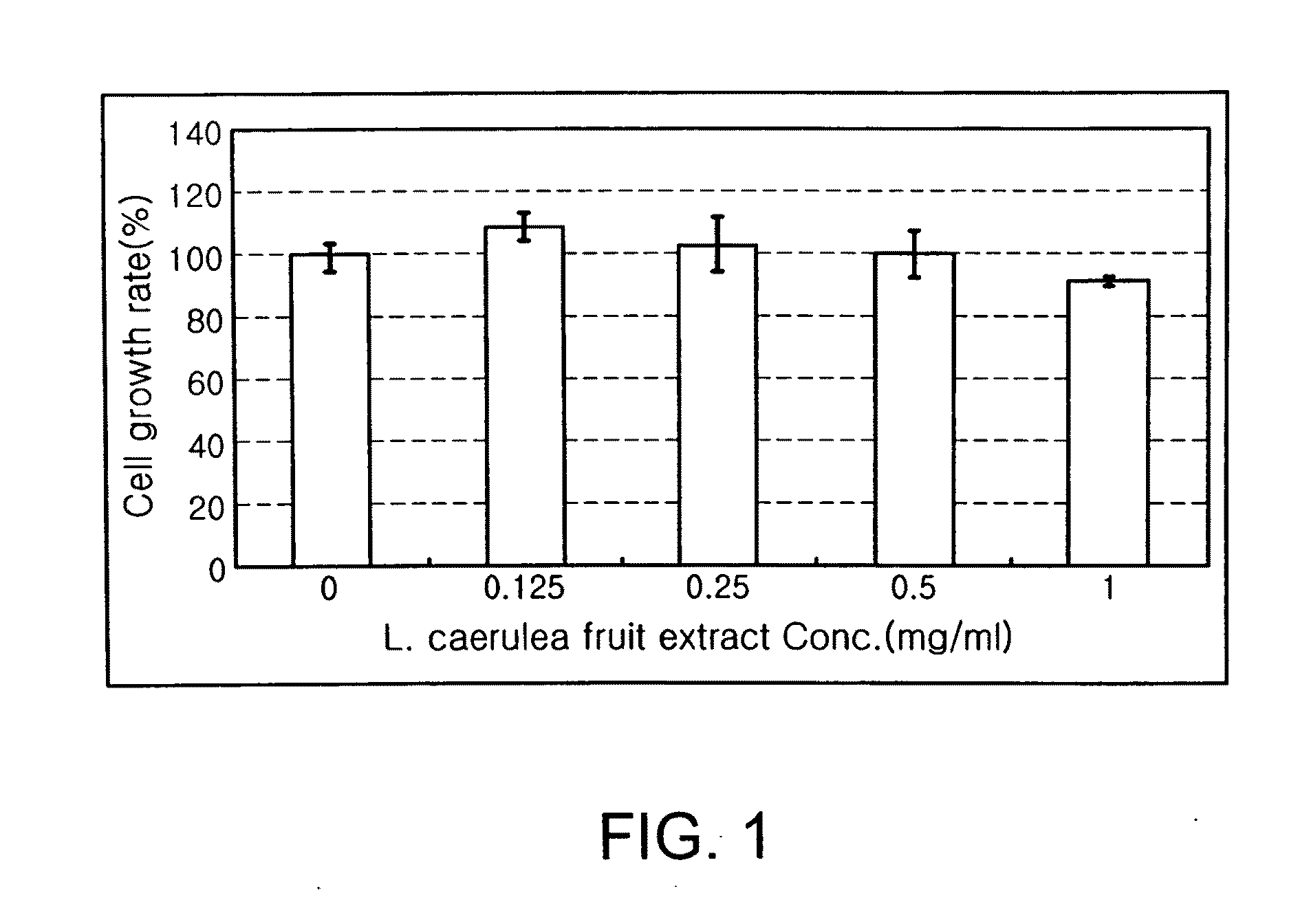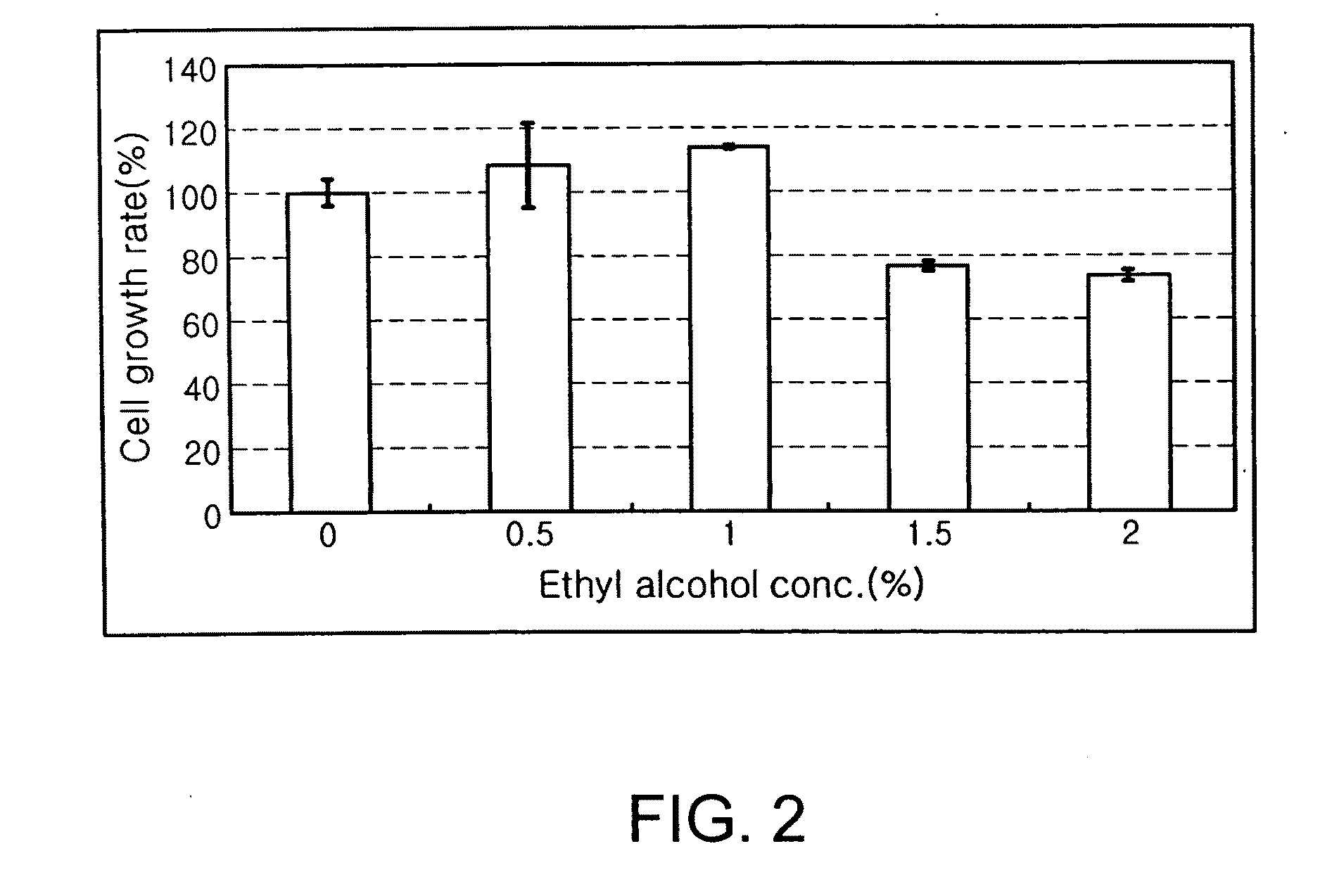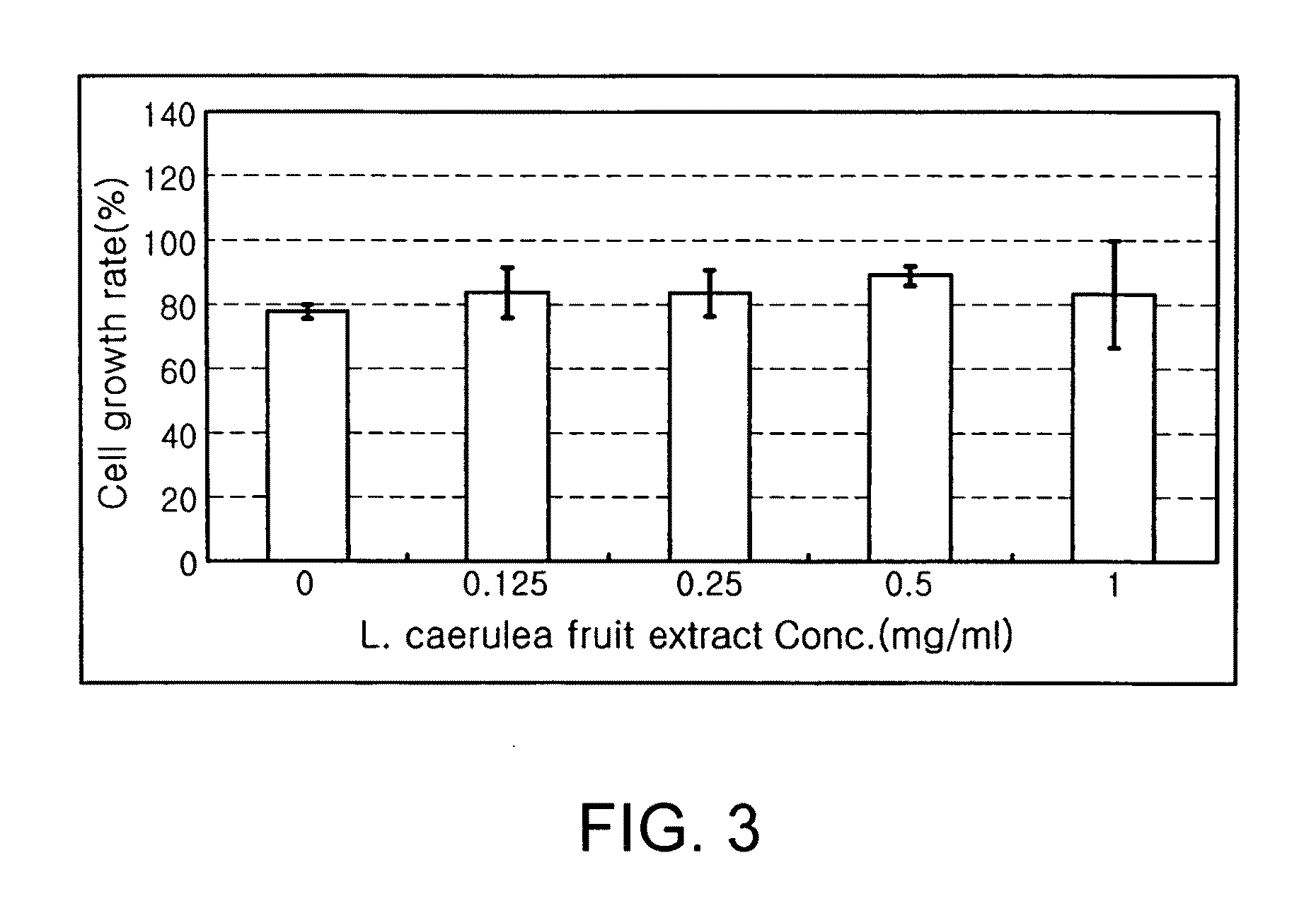Pharmaceutical composition for the prevention and treatment of liver disease comprising a lonicera caerulea L. Var. Edulis extract
- Summary
- Abstract
- Description
- Claims
- Application Information
AI Technical Summary
Benefits of technology
Problems solved by technology
Method used
Image
Examples
example 1
Preparation of an Extract from Fruits of Lonicera caerulea L. var. edulis
[0036](1-1) Hot Water Extraction Using Water as a Solvent
[0037]Fruits of native Lonicera caerulea L. var. edulis were directly collected in Yanbian of China and Baekdu Mountain, and dried for use in experiments. 100 g of pulverized L. caerulea fruits were added to 1 liter of distilled water and agitated. The resulting solution was extracted under reflux for 3 hrs at 90° C. to 95° C. and filtered. The obtained galenic extract was concentrated under reduced pressure at 55° C. to 65° C. and freeze-dried, thereby yielding 21.2 g of a galenic composition powder extract.
[0038](1-2) Hot Water Extraction Using a Solvent Mixture of Water and Alcohol
[0039]1 liter of 25% ethyl alcohol was added to 100 g of pulverized L. caerulea fruits as used in Example 1-1, and agitated. Then, the resulting solution was extracted under reflux for 3 hrs at 80° C. to 90° C. and filtered. The obtained galenic extract was concentrated unde...
example 2
Evaluation of the Effect of the Extract from Fruits of Lonicera caerulea L. var. edulis on the Growth of Hepatocytes
[0040]HepG2 cells were seeded in a 96-well plate at a density of 1×104 cells per well, and incubated in a culture medium supplemented with 10% fetal bovine serum (FBS) for 16 hrs. After the 96-well plate was washed with physiological saline, the extract from L. caerulea fruits, which was diluted in culture medium in amounts of 0, 0.125, 0.25, 0.5 and 1 mg / ml, was added to each well. After incubation for 48 hrs, the cell number in each well was measured using a SRB method.
[0041]After the incubation for 48 hrs, the culture medium containing the extract from L. caerulea fruits was removed from the 96-well plate. The 96-well plate was washed with physiological saline, and the cells in each well were fixed with 70% acetone for 20 min. The fixed cells were dried, stained with a SRB solution for 30 min, and washed with a 1% acetic acid solution five times to eliminate unbound...
example 3
Evaluation of the Effect of Ethyl Alcohol on the Growth of Hepatocytes
[0042]HepG2 cells were seeded in a 96-well plate at a density of 1×104 cells per well and incubated in a culture medium supplemented with 10% FBS for 16 hrs. After the 96-well plate was washed with physiological saline, ethyl alcohol, which was diluted in a culture medium in amounts of 0, 0.5, 1.0, 1.5 and 2.0% (v / v), was added to each well in which HepG2 cells were cultured. After incubation for 48 hrs, the cell number in each well was measured using a SRB method.
[0043]The culture medium was removed, and the 96-well plate was washed with physiological saline. The cells in each well were then fixed with 70% acetone for 20 min. The fixed cells were dried, stained with an SRB solution for 30 min, and washed with a 1% acetic acid solution five times to eliminate unbound SRB. After the cells were dried again, 10 mM Tris was added to the cells to dissolve cellular proteins and unbound SRB, and absorbance was measured a...
PUM
 Login to View More
Login to View More Abstract
Description
Claims
Application Information
 Login to View More
Login to View More - R&D
- Intellectual Property
- Life Sciences
- Materials
- Tech Scout
- Unparalleled Data Quality
- Higher Quality Content
- 60% Fewer Hallucinations
Browse by: Latest US Patents, China's latest patents, Technical Efficacy Thesaurus, Application Domain, Technology Topic, Popular Technical Reports.
© 2025 PatSnap. All rights reserved.Legal|Privacy policy|Modern Slavery Act Transparency Statement|Sitemap|About US| Contact US: help@patsnap.com



